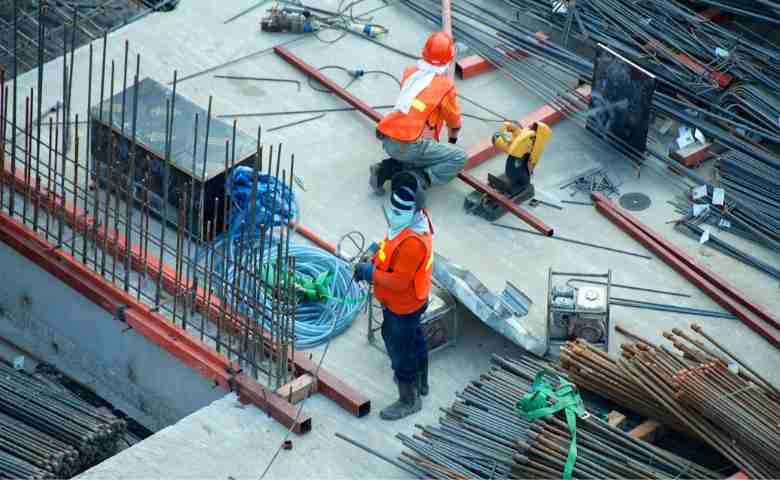Last Updated on March 31, 2025 by Admin
The construction industry is undergoing a digital transformation, with the Internet of Things (IoT) becoming critical in improving efficiency, health and resource management. By integrating IoT applications, construction firms can monitor equipment, enhance worker safety and streamline operations. Explore what the IoT is, its applications in construction and real-world examples of its impact.
Table of Contents
What Is the IoT?
The IoT is a network of physical devices with sensors and software that allow them to collect and exchange data over the internet. These range from everyday household objects to complex industrial systems.
The construction sector has a long history of adopting digital technology to improve operations. In the 1980s, construction firms began using computers to estimate costs, manage payroll and communicate with stakeholders. By the 1990s, most companies had office computer systems, streamlining administrative processes. This early adoption of digital tools paved the way for today’s IoT applications, which go beyond office tasks to enhance real-time monitoring, automate processes and improve site safety.
IoT Examples
The IoT is widely used across industries, including construction, real estate, infrastructure, oil and gas, and education. Some common IoT examples include:
- Smart home devices: These include thermostats, security cameras and lighting systems that are controlled remotely.
- Industrial IoT sensors: These are equipment-monitoring sensors used to detect maintenance needs.
- Wearable health trackers: These devices monitor heart rate, temperature and air quality in work environments.
Potential IoT Applications in the Construction Sector
Implementing the IoT in construction improves project management, safety and operational efficiency. Below are some of the most valuable uses.
Equipment and Tool Tracking
Construction businesses lose time and money searching for misplaced or stolen tools. IoT-powered GPS trackers allow real-time monitoring of construction equipment, reducing downtime and preventing theft.
Remote Operations and Site Monitoring
IoT-enabled cameras and sensors help construction managers remotely view jobsites in real time. These systems improve coordination, reduce project delays and enhance quality control.
Worker Safety Through Wearables
AI-powered wearables like smart helmets, safety vests and smartwatches enhance construction safety by monitoring fatigue, detecting falls, and providing real-time alerts. Contractors can adjust and respond to hazards instantly, improving jobsite safety and efficiency.
Structural Health Monitoring
IoT sensors embedded in buildings monitor temperature, humidity, vibration and structural integrity. This real-time data allows for predictive maintenance, ensuring structures remain safe and durable.
Augmented Reality (AR) for Project Planning
IoT-powered AR applications enhance construction by automating measurements, visualizing blueprints and assisting with on-site modifications. Doing so improves accuracy and reduces costly mistakes.
Internet of Things Examples in Construction in Action
To better understand how IoT is revolutionizing construction, here are some practical IoT examples:
- Concrete curing sensors: IoT devices track humidity and temperature to ensure concrete cures correctly, reducing structural failures.
- Energy management systems: IoT sensors monitor energy usage to optimize consumption and reduce costs on construction sites.
- Waste reduction technologies: IoT-based tracking helps construction firms minimize waste and improve sustainability efforts.
- Smart hard hats: With IoT sensors, these helmets monitor head impacts and environmental hazards to improve safety.
- Automated inventory management: Radio-frequency identification and IoT tags track building materials in real time, preventing shortages and reducing waste.
- Drones for site surveys: IoT-powered drones capture aerial imagery and scan construction sites, enhancing accuracy in planning and inspections.
- Predictive maintenance for machinery: IoT sensors detect early signs of equipment wear and tear, allowing for proactive maintenance to reduce expensive breakdowns.
- Real-time air quality monitoring: IoT devices measure dust, gas levels and airborne pollutants to ensure compliance with safety regulations.
The Future of the IoT in Construction
The IoT is transforming construction, real estate and infrastructure by connecting equipment, people, and processes. IoT applications improve safety, optimize resources and enhance project management. By integrating smart technology, sensors and real-time data analytics, construction companies can enhance productivity, reduce costs and promote sustainability.
The future of construction is digital, and IoT is at the forefront of this transformation. As technology advances, brands must embrace it to stay competitive and efficient in an evolving sector.
Related Posts:
- Impact of The Internet of Things (IoT) in the Construction Industry
- The Evolution of Construction 4.0: A Comprehensive Guide
- Top Electrical Engineering Projects for Diploma Students [2025 Updated List]
- How Smart Construction Technology Transforming Construction Industry
- Connected Construction Sites: The Future In Construction Technology


